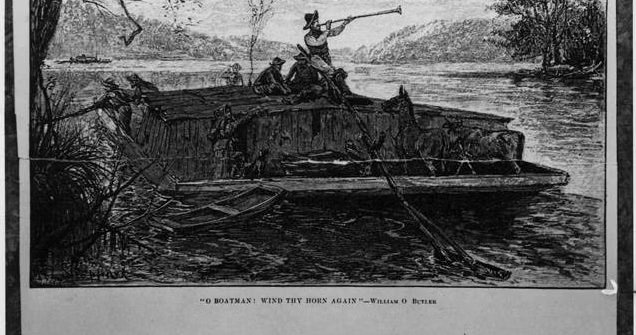As part of an ongoing effort to delve into the rich collections at the Kentucky Historical Society (KHS), a fascinating artifact has come to light that speaks volumes about the region’s nautical heritage. Amidst a quest to find items related to boats and navigation, a “Boat horn” (1990.15.8) has emerged as an intriguing piece of history.
Standing over three and a half feet long and four inches wide, this tin horn caught the attention of researchers due to its unique attributes and mysterious background. Despite the initial lack of detailed information regarding its origin and usage, further investigation has shed some light on its past.
The horn was donated by Elizabeth Ann M. Moore of Mt. Sterling, who inherited it along with various early to mid-19th-century tools from her father, Dr. Frederick A. Millard (1887-1975). These tools, used by Millard’s family in Bloomington, Kentucky, illustrate the self-reliance of the time. The collection includes items made by Millard’s father, John Burgett Millard, as well as modified shoe lasts showing signs of heavy use.
Unlike the rest of the collection, the boat horn’s history is linked to “Capt. Freese” of Louisa, likely Captain Frank F. Freese (1849-1931), a former steamboat captain turned passenger agent. However, the horn’s construction suggests it dates back to an even earlier period, possibly to Frank’s father, Milton Freese, who was active in the 19th century as a Confederate supporter and steamboat owner.
To gain more insight, the horn was shown to Capt. Don Sanders, a renowned river man and columnist. Sanders identified it as a flatboatman’s horn, a crucial instrument from an earlier era of river navigation. He noted its resemblance to another horn in KHS’s collection used on a mid-19th-century stagecoach route between Louisville and Nashville.

Flatboats, essential for one-way transportation on the Ohio River from the 1780s to the late 1850s, were steered by large oars that gave them the nickname “Broadhorn.” These boats transported goods and people downstream, with boatmen often returning by steamboat or railroad.
This discovery not only adds to the understanding of early river commerce but also connects to cultural works and poetry that celebrated the era. Poems like William O. Butler’s 1821 “The Boatman’s Horn” and Donn Piatt’s 1883 “The Ohio Boat Horn” nostalgically reference the flatboatmen’s horns, underscoring their significance in the historical and cultural landscape.
The boat horn, now recognized as a flatboatman’s horn, enriches KHS’s collection and offers a tangible link to Kentucky’s riverine heritage.
This article is based on the Kentucky History Society. 


